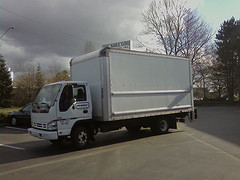The Federal Motor Carrier Safety Regulations

The FMCSA requires only those commercial motor vehicles that are transporting passengers or property in interstate commerce to have a USDOT number.
Utah Administrative Code R909-1-2 has adopted the Federal Motor Carrier Safety Regulations and permits the Utah Department of Public Safety to enforce those federal regulations.
There is one particular federal regulation that the Utah Highway Patrol loves to enforce, but the problem is that in most instances they are enforcing the law against those to whom it does not apply. Rule 390.21 requires all “commercial motor vehicles” to display a USDOT number. In order to know which vehicles must display that number, however, we should look to the definitions found in the FMCSR.
First, Rule 390.5 sets forth the applicable definitions. A “commercial motor vehicle” has the following meaning: any self-propelled or towed motor vehicle used on a highway in interstate commerce to transport passengers or property when the vehicle—
(1) Has a gross vehicle weight rating or gross combination weight rating, or gross vehicle weight or gross combination weight, of 4,536 kg (10,001 pounds) or more, whichever is greater; or
(2) Is designed or used to transport more than 8 passengers (including the driver) for compensation; or
(3) Is designed or used to transport more than 15 passengers, including the driver, and is not used to transport passengers for compensation; or
(4) Is used in transporting material found by the Secretary of Transportation to be hazardous…
The Utah highway patrol usually stops with subsection one. They believe that if a vehicle weighs more than 10k pounds that that is all that’s needed. That is where they are mistaken. If you look at the first part of the definition before getting into the subsections it specifically states that a CMV is one that is used on a highway in interstate commerce, which term is also defined by the regulations.
Interstate commerce means trade, traffic, or transportation in the United States—
(1) Between a place in a State and a place outside of such State (including a place outside of the United States);
(2) Between two places in a State through another State or a place outside of the United States; or
(3) Between two places in a State as part of trade, traffic, or transportation originating or terminating outside the State or the United States.
UHP simply ignores this requirement, probably because they would have a very hard time pulling a vehicle over because how could they possibly know whether a vehicle is traveling in interstate commerce unless they are sitting at the border.
Driver’s of commercial vehicles should not permit UHP to get away with this. If you get pulled over and cited for not having a USDOT number and you weren’t traveling in interstate commerce, don’t pay the fine and fight the charge. UHP needs to be held accountable for these illegal stops.




